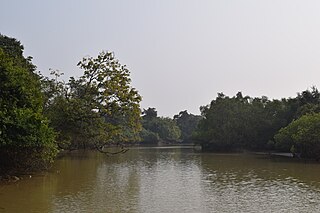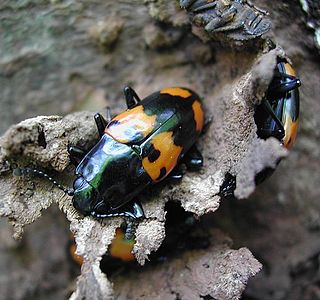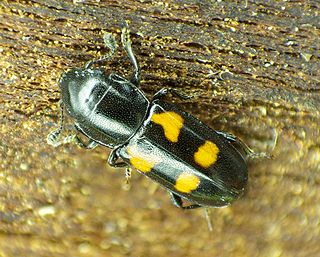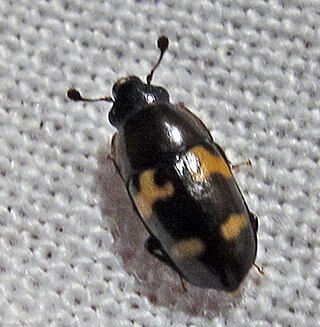
The sap beetles, also known as Nitidulidae, are a family of beetles.

Sharks are a group of elasmobranch fish characterized by a cartilaginous skeleton, five to seven gill slits on the sides of the head, and pectoral fins that are not fused to the head. Modern sharks are classified within the clade Selachimorpha and are the sister group to the Batoidea. Some sources extend the term "shark" as an informal category including extinct members of Chondrichthyes with a shark-like morphology, such as hybodonts. Shark-like chondrichthyans such as Cladoselache and Doliodus first appeared in the Devonian Period, though some fossilized chondrichthyan-like scales are as old as the Late Ordovician. The earliest confirmed modern sharks (selachimorphs) are known from the Early Jurassic around 200 million years ago, with the oldest known member being Agaleus, though records of true sharks may extend back as far as the Permian.

Convolvulaceae, commonly called the bindweeds or morning glories, is a family of about 60 genera and more than 1,650 species. These species are primarily herbaceous vines, but also include trees, shrubs and herbs. The tubers of several species are edible, the best known of which is the sweet potato.

Lilium is a genus of herbaceous flowering plants growing from bulbs, all with large and often prominent flowers. They are the true lilies. Lilies are a group of flowering plants which are important in culture and literature in much of the world. Most species are native to the Northern Hemisphere and their range is temperate climates and extends into the subtropics. Many other plants have "lily" in their common names, but do not belong to the same genus and are therefore not true lilies.

The natural environment or natural world encompasses all living and non-living things occurring naturally, meaning in this case not artificial. The term is most often applied to Earth or some parts of Earth. This environment encompasses the interaction of all living species, climate, weather and natural resources that affect human survival and economic activity. The concept of the natural environment can be distinguished as components:

Bhitarkanika Mangroves is a mangrove wetland in Odisha, India, covering an area of 650 km (400 mi) in the Brahmani River and Baitarani River deltas.

Megalodacne is a genus of fungivorous beetles in the family Erotylidae.

Glischrochilus[note 1] is a genus of sap-feeding and predatory beetles under the family Nitidulidae, subfamily Cryptarchinae. Most members of this genus are commonly known as picnic beetles or beer bugs.

iNaturalist is an American 501(c)(3) nonprofit social network of naturalists, citizen scientists, and biologists built on the concept of mapping and sharing observations of biodiversity across the globe. iNaturalist may be accessed via its website or from its mobile applications. iNaturalist includes an automated species identification tool, and users further assist each other in identifying organisms from photographs. As of 24 February 2024, iNaturalist users had contributed approximately 172,751,520 observations of plants, animals, fungi, and other organisms worldwide, and around 350,000 users were active in the previous 30 days.

Glischrochilus hortensis is a species of beetle in the genus Glischrochilus of the family Nitidulidae. The genus are commonly known as 'sap-beetles'.

Glischrochilus quadripunctatus, commonly known as the European bark beetle predator is a species of beetle in the genus Glischrochilus of the family Nitidulidae.

Glischrochilus quadrisignatus, known generally as four-spotted sap beetle, is a species of sap-feeding beetle in the family Nitidulidae. Other common names include the beer bug and picnic beetle. It is found in North America.
Glischrochilus obtusus is a species of sap-feeding beetle in the family Nitidulidae. It is found in North America.
Glischrochilus sanguinolentus is a species of sap-feeding beetle in the family Nitidulidae. It is found in North America.
Glischrochilus vittatus is a species of sap-feeding beetle in the family Nitidulidae. It is found in North America.
Glischrochilus confluentus is a species of sap-feeding beetle in the family Nitidulidae. It is found in North America.

Glischrochilus fasciatus, the picnic beetle, is a species of sap-feeding beetle in the family Nitidulidae. It is found in Central America and North America.











